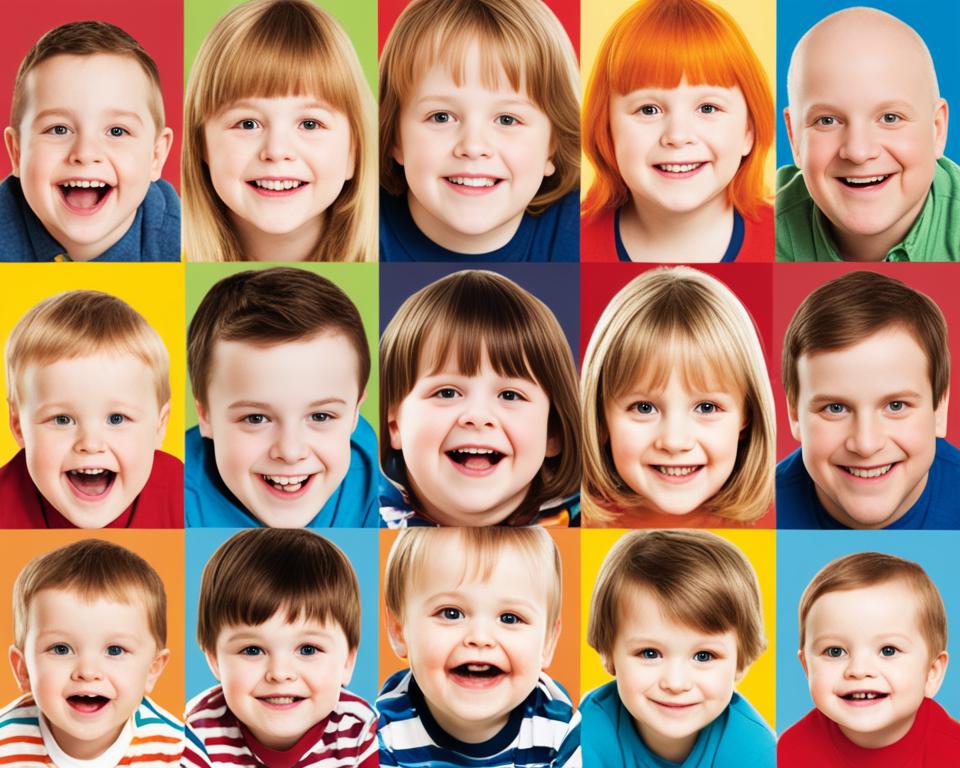Understanding how to communicate with a nonverbal autistic child is a challenge many parents, caregivers,…

Down Syndrome and Autism Difference Explained
Discovering the truth about the down syndrome and autism difference is important for understanding these unique conditions. While both are life-altering, they have distinct origins and characteristics which can affect individuals in different ways. The difference between down syndrome and autism lies in their genetic and neurological makeup, which leads to dissimilar developmental paths.
Often people wonder about down syndrome vs autism when observing certain behaviors, since there can be overlap in social and communication challenges. Despite some similarities and differences between down syndrome and autism, it is the distinguishing features of down syndrome and autism that clinicians use for diagnosis and intervention. It is critical to distinguish down syndrome from autism due to the differing support each individual might require.
Gaining clarity on the down syndrome versus autism debate not only helps in providing appropriate care but also in fostering greater community understanding. Let’s embark on unraveling the complexities and understanding the differences between down syndrome and autism, providing a solid foundation for awareness and empathy.
Distinguishing Features of Down Syndrome and Autism
When determining the key differences between Down syndrome and autism, it’s essential to consider the distinctive physical and behavioral characteristics inherent to each condition. For parents, educators, and healthcare providers, recognizing these features can be vital in understanding and supporting individuals affected by these diagnoses.
- Physical Characteristics: Down syndrome often presents with specific physical attributes such as a flattened face, particularly the nose bridge; almond-shaped eyes that slant upward; a short neck; small hands and feet; and a tongue that may stick out. These features are a direct result of the extra copy of chromosome 21, the genetic hallmark of Down syndrome.
- Behavioral Signs: Although people with Down syndrome or autism may both show a preference for routine and demonstrate repetitive behaviors, their social interactions tend to differ. Those with Down syndrome can be very affectionate and sociable, whereas individuals with autism might show less interest in socializing and may struggle with conventional communication.
- Linguistic Abilities: In contrast to those with Down syndrome who often attempt to mimic words and gestures, persons with autism might face more significant challenges in language development, which can range from delayed speech to a complete lack of verbal communication.
- Sensory Processing: One of the distinguishing features of autism is the potential for sensory sensitivities. Individuals with autism might be overwhelmingly affected by loud noises, bright lights, or specific textures a distinction not typically shared by those with Down syndrome.
- Social-Relational Domain: The crux of autism lays in its impact on the social-relational domain, where individuals find it difficult to understand and engage in typical social behaviors. This is a fundamental difference from Down syndrome, which is primarily a genetic condition, and does not usually hinder one’s innate drive to connect with others.
Understanding the contrasting down syndrome and autism difference provides a foundation for better tailored support strategies, ensuring that each individual can thrive according to their unique needs and capabilities. Although there is a down syndrome vs autism discussion, the ultimate goal should always be to embrace and empower people regardless of their condition.
Understanding the Differences Between Down Syndrome and Autism
In the journey of distinguishing between Down syndrome and autism, it is essential to grasp not only their unique clinical definitions but also the disparate indications they present. Discerning the nuanced down syndrome and autism difference involves an intricate understanding of these conditions – from their diagnostics to their physical and behavioral indicators. This understanding is crucial in providing the precise support and interventions that each individual requires.
Clinical Definitions and Diagnoses
Clinically, Down syndrome and autism are initially identified through contrasting methods. Right from birth, the presence of Down syndrome can be ascertained through characteristic physical traits confirmed by genetic testing. Autism, however, presents a more complex picture, often requiring a series of in-depth evaluations by mental health professionals. The critical distinction here is the observable versus the behavioral: while Down syndrome’s genetic basis lends to a more uniform set of characteristics, autism’s intricate spectrum is shaped by a wider array of factors, leading to varied behavioral manifestations that demand a tailored approach to diagnosis and intervention.
Physical Characteristics Versus Behavioral Signs
The difference between down syndrome and autism further manifests in physical versus behavioral markers. Down syndrome’s physical characteristics, such as distinct facial features and body stature, provide immediate visual cues, thereby simplifying initial identification. Conversely, autism does not impart such physical signs, with diagnosis relying heavily on behavior and social interactions. These factors include challenges with non-verbal communication, difficulties in forming and maintaining relationships, and the presence of repetitive motions or intense interests in certain subjects. Recognizing these distinguishing features of down syndrome and autism is vital for understanding and addressing the unique experiences of affected individuals.
Developmental Trajectories and Interventions
When considering down syndrome versus autism, it is evident that both require dedicated support from early on. The down syndrome and autism comparison shows that applied interventions like ABA therapy and occupational therapy are universally beneficial, yet their applications diverge. Down syndrome interventions might revolve around enhancing motor skills along with cognitive and speech therapy, reflecting a delay yet predictability in reaching developmental milestones. Autism interventions, on the other hand, often emphasize social communication methods and personalizing learning strategies to navigate the more variable developmental pathways. Through an empathy-driven, knowledge-based approach, understanding the differences between down syndrome and autism reveals the complexity of both conditions and highlights the importance of specialized care for every individual’s growth.
FAQs
What is the main difference between Down syndrome and autism?
The main difference lies in their origins and signs. Down syndrome is a genetic disorder caused by an extra chromosome 21 and results in physical features and developmental delays. Autism, or Autism Spectrum Disorder (ASD), is a developmental disorder with social communication challenges, repetitive behaviors, and restricted interests, without distinct physical characteristics.
Can a person have both Down syndrome and autism?
Yes, an individual can have a dual diagnosis of both Down syndrome and autism. This situation calls for tailored clinical observation and intervention.
How are Down syndrome and autism diagnosed?
Down syndrome is typically diagnosed at birth or prenatally through genetic testing, due to visible physical traits. Autism diagnoses usually require behavioral observations by specialists and do not rely on physical characteristics for diagnosis.
Do Down syndrome and autism share any similar characteristics?
Yes, both conditions can present challenges in communication and social interaction, and both may show repetitive behaviors. However, their expression and the underlying issues differ.
Why don’t individuals with autism display the physical features seen in Down syndrome?
Autism is primarily a neurodevelopmental disorder that doesn’t affect chromosome structure, so it does not result in the distinctive physical features that are characteristic of Down syndrome, which is a genetic chromosomal condition.
How do the developmental trajectories of Down syndrome and autism differ?
Individuals with Down syndrome often follow a predictable yet delayed developmental pattern, while individuals with autism can experience a wider variability in developmental milestones, especially regarding social and communicative development.
What types of interventions are common for Down syndrome and autism?
Interventions such as speech and occupational therapies apply to both conditions, with added physical therapy for Down syndrome. However, the focus of autism interventions is often on behavioral and social communication therapies.



This Post Has 0 Comments